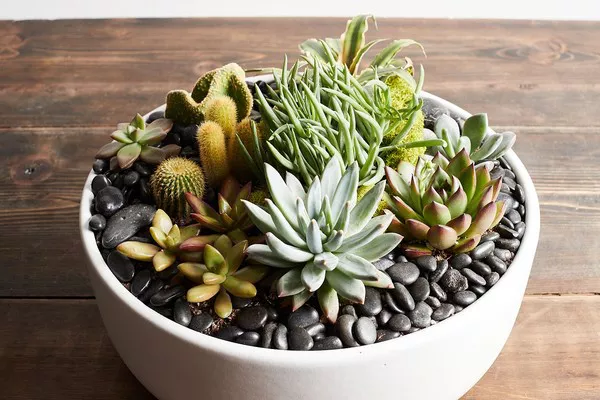Succulents have gained immense popularity in recent years, thanks to their unique and captivating beauty. These resilient plants, known for their ability to store water in their leaves, stems, and roots, have become a staple in many homes and gardens. While succulents are generally considered safe and low-maintenance, it is important to be aware that certain species can pose a threat to human health. In this article, we will explore some of the toxic succulents that can potentially cause harm and the precautions you can take to ensure your safety.
Toxicity Levels and Symptoms
Not all succulents are created equal when it comes to toxicity. Some species contain compounds that can cause mild to severe reactions in humans. The level of toxicity and the symptoms experienced can vary from person to person, depending on factors such as the individual’s sensitivity and the amount ingested or exposed to. Common symptoms may include skin irritation, rash, swelling, nausea, vomiting, and in rare cases, more serious reactions like difficulty breathing or organ damage.
Succulents with Toxic Properties
a. Euphorbia: Euphorbia species, including the popular Euphorbia milii (Crown of Thorns), contain a milky sap that can cause skin irritation and allergic reactions. Ingestion can lead to stomach upset and in some cases, severe poisoning. It is advisable to handle these succulents with gloves and keep them away from children and pets.
b. Kalanchoe: Several Kalanchoe species, such as Kalanchoe daigremontiana (Mother of Thousands), contain cardiac glycosides that can cause irregular heartbeat and gastrointestinal distress if ingested. Contact with the sap may cause skin irritation and eye irritation. Keep these succulents out of reach of children and pets.
c. Echeveria: While most Echeveria species are considered non-toxic, it’s essential to be cautious with the sap, as it may cause skin irritation and allergies in some individuals. If you notice any adverse reactions, discontinue contact and seek medical advice.
d. Aloe: Aloe vera, widely known for its medicinal properties, can be beneficial when used externally. However, ingestion of aloe latex, found just beneath the outer leaf, can cause severe diarrhea and abdominal pain. Exercise caution when preparing homemade remedies using aloe.
e. Crassula: Certain species of Crassula, such as Crassula ovata (Jade Plant), contain alkaloids that can be toxic if ingested in large quantities. While accidental ingestion of small amounts is unlikely to cause harm, it is best to keep these plants away from curious children and pets.
Precautions and Safety Measures
a. Identify and Label: Familiarize yourself with the succulents in your collection and label any toxic plants. This will help you remember which ones require extra caution.
b. Keep Out of Reach: If you have young children or pets, ensure toxic succulents are placed in areas where they cannot be easily accessed. Consider hanging planters or placing them on high shelves.
c. Wear Protective Gear: When handling succulents with toxic properties, wear gloves, long sleeves, and eye protection to minimize direct contact with the sap. Avoid touching your face while handling these plants and wash your hands thoroughly afterward.
d. Educate Family Members: Teach your family members, especially children, about the potential dangers of certain succulents. Encourage them to admire plants without touching or ingesting them.
e. Seek Medical Attention: If accidental ingestion or severe skin irritation occurs, seek medical advice immediately. Provide healthcare professionals with information about the plant ingested or encountered to aid in proper treatment.
f. Choose Safer Alternatives: If you are concerned about the potential risks of toxic succulents, opt for non-toxic varieties. There are numerous beautiful succulents available that are safe for both humans and pets.
Conclusion
Succulents can add beauty and tranquility to any space, but it is crucial to be aware of the potential hazards they may pose. While the majority of succulents are harmless, certain species can cause adverse reactions in humans. By understanding the toxic properties of specific succulents and implementing safety measures, you can continue to enjoy these captivating plants without compromising your well-being. Remember to exercise caution, educate yourself and others, and seek medical attention promptly if needed. With proper care, you can create a safe and enjoyable environment for both yourself and your succulent collection.


